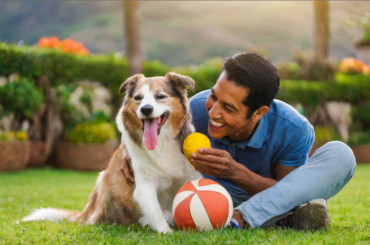Dealing with a fearful dog requires patience, understanding, and gentle guidance. Fearful behavior in dogs can manifest in various ways, such as trembling, cowering, excessive barking, or even aggression. It’s essential to approach a fearful dog with care to build trust and confidence. Here are some effective strategies to help you deal with a fearful dog:
-
Create a Safe Environment:
- Provide a quiet and safe space where your dog can retreat when feeling anxious. This space should be comfortable, with familiar items like their bed, toys, and water bowl.
-
Move Slowly and Calmly:
- Avoid sudden movements or loud noises that can startle a fearful dog. Move calmly and speak in a soft, soothing tone to create a relaxed atmosphere.
-
Positive Reinforcement:
- Use positive reinforcement to reward calm and brave behavior. Offer treats, praise, or affection when the dog displays confidence or faces a fear-inducing situation without reacting negatively.
-
Desensitize Gradually:
- Gradually expose your dog to the things that trigger fear in a controlled and positive manner. Start with less intimidating versions and slowly progress, rewarding calm behavior at each step.
-
Counter-Conditioning:
- Associate the feared stimuli with positive experiences. For example, if your dog is afraid of strangers, have them offer treats from a distance. Over time, the dog may start associating strangers with positive things.

- Associate the feared stimuli with positive experiences. For example, if your dog is afraid of strangers, have them offer treats from a distance. Over time, the dog may start associating strangers with positive things.
-
Use Relaxation Techniques:
- Incorporate relaxation techniques such as massage or gentle brushing to create positive associations with touch and physical contact.
-
Respect Boundaries:
- Allow the dog to initiate interactions. Avoid forcing them into situations that cause fear. Respect their need for personal space and time to feel comfortable.
-
Establish Predictability:
- Create a predictable routine for your dog, including feeding, walks, and playtime. Predictability can help reduce anxiety by providing a sense of security.
-
Avoid Punishment:
- Punishment can exacerbate fear and anxiety. Instead of punishing fearful behavior, focus on reinforcing positive behaviors and gradually building confidence.
-
Seek Professional Help:
- Consult with a professional dog trainer or behaviorist experienced in working with fearful dogs. They can provide tailored guidance and training plans to address specific fears and anxieties.
-
Use Calming Aids:
- Consider using calming aids such as pheromone diffusers, calming collars, or calming sprays to create a soothing environment for your dog.
-
Engage in Interactive Play:
- Interactive play can be a positive way to build trust and create a bond with your dog. Use toys that promote mental stimulation and encourage them to engage in play.
-
Provide Physical and Mental Exercise:
- Regular exercise helps reduce stress and anxiety. Physical activities like walks and play, combined with mental stimulation through puzzle toys, can contribute to a happier and more confident dog.
-
Consult with a Veterinarian:
- If your dog’s fearfulness is severe or sudden, consult with a veterinarian to rule out any underlying health issues. In some cases, fear may be a symptom of pain or discomfort.
-
Be Patient and Consistent:
- Building trust and overcoming fear takes time. Be patient, consistent, and understanding throughout the process. Celebrate small victories and progress.
Remember that each dog is unique, and what works for one may not work for another. Tailor your approach based on your dog’s individual needs and reactions. With time, positive reinforcement, and a supportive environment, many fearful dogs can overcome their anxieties and become more confident and content companions.






